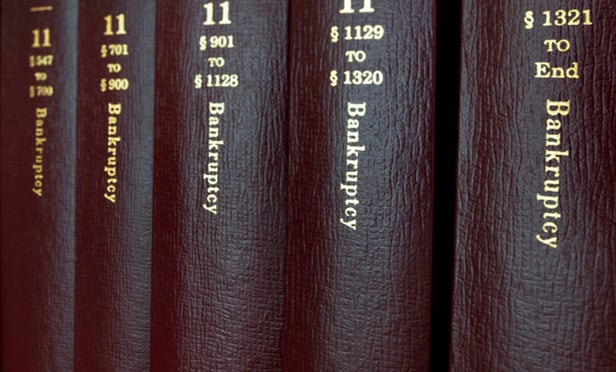Features

Don't Set Me Off: No Triangular Setoff Among Affiliated Entities and a Debtor Counterparty
In today's global economy, companies often have multiple business lines operating through separate entities. Outside of bankruptcy, these affiliated operations sometimes transact in a holistic — albeit legally distinct — debtor-creditor relationship with their counterparty. But, as this article discusses, the legal separateness of affiliates can hinder economic protections that a creditor might have otherwise when its counterparty files for bankruptcy.
Features

Caveat Intercreditor: Bankruptcy May Be Coming
<b><i>Bankruptcy Provisions in First Lien/Second Lien Intercreditor Agreements</b></i><p>While intercreditor agreements (ICAs) are not necessarily the most attention-grabbing of the various loan documents common to large financing transactions, they are nevertheless important, and lack of attention to detail with respect to their provisions could lead to unintended results in any future bankruptcy case.
Features

Case Study: Delaware Bankruptcy Court Denies Trustee's Breach of Fiduciary Duty Suit
In January, a bench trial occurred in <i>In re Covenant Partners, L.P.</i>, in which the Trustee of Debtor, Covenant Partners, L.P., sued for breach of fiduciary duty.
Features

How Bankruptcy Courts Will Treat Cases Involving Cryptocurrency Exchanges
This article looks at some of the issues that may arise if a cryptocurrency exchange becomes a debtor in a case under the Bankruptcy Code.
Features

The How, What and Why of a Potential PG&E Bankruptcy
PG&E Corporation and its subsidiary, Pacific Gas & Electric Company announced that it expects to file for Chapter 11 bankruptcy protection on or around Jan. 29, 2019, right around the conclusion of a mandatory 15-day notice requirement under California law. Such a filing would represent the second time PG&E resorted to protection under the U.S. Bankruptcy Code.
Features

Junior Noteholders Successfully Petition for Dismissal of Involuntary Filing
The bankruptcy court's ruling is a seminal decision that meaningfully circumscribes the ability of a secured noteholder under an indenture, particularly for structured debt, to force the debtor (i.e., issuer of the debt) into an involuntary bankruptcy.
Features

Reports of the Demise of 'Gifting' Chapter 11 Plans Are An Exaggeration
In Nuverra Environmental Solutions,, the U.S. District Court for the District of Delaware affirmed a bankruptcy court order confirming a non-consensual Chapter 11 plan that included "gifted" consideration from a senior secured creditor to fund unequal distributions to two separate classes of unsecured creditors.
Features

The Bankruptcy Code's Inherent Limitations for Struggling Golf Courses
<b><i>Part One of a Two-Part Article</b></i><p>This article describes conflicts with zoning boards and neighbors as it relates to distressed golf course properties and the methods sometimes available in the bankruptcy realm for working around the problem of restrictive covenants that run with the land.
Features

Eighth Circuit Rejects Ponzi Scheme Presumption to Protect Legitimate Loan Repayments
The Eighth Circuit affirmed the lower courts' dismissal of a bankruptcy trustee's $250 million fraudulent transfer suit against two banks (the Banks), rejecting the so called “Ponzi scheme presumption” that “allows a creditor to by-pass the proof requirements of a fraudulent-transfer claim by showing that the debtor operated a Ponzi scheme and transferred assets 'in furtherance of the scheme.'”
Features

Fifth Circuit Holds Asset Purchaser Unable to Acquire Rejected License Agreement
A license agreement "deemed rejected by operation of law" could not be acquired under a court-approved asset purchase agreement, held the U.S. Court of Appeals for the Fifth Circuit
Need Help?
- Prefer an IP authenticated environment? Request a transition or call 800-756-8993.
- Need other assistance? email Customer Service or call 1-877-256-2472.
MOST POPULAR STORIES
- Delaware Chancery Court Takes Fresh Look At Zone of InsolvencyOver a decade ago, a Delaware Chancery Court's footnote in <i>Credit Lyonnais Bank Nederland, N.V. v. Pathe Communications</i>, 1991 WL 277613 (Del. Ch. 1991), established the "zone of insolvency" as something to be feared by directors and officers and served as a catalyst for countless creditor lawsuits. Claims by creditors committee and trustees against directors and officers for breach of fiduciary duties owed to creditors have since become commonplace. But in a decision that may have equally great repercussion both in the Boardroom and in bankruptcy cases, the Delaware Chancery Court has revisited zone-of-insolvency case law and limited this ever-expanding legal theory.Read More ›
- The DOJ's Corporate Enforcement Policy: One Year LaterThe DOJ's Criminal Division issued three declinations since the issuance of the revised CEP a year ago. Review of these cases gives insight into DOJ's implementation of the new policy in practice.Read More ›
- The Right to Associate in the DefenseThe "right to associate" permits the insurer to work with the insured to investigate, defend, or settle a claim. Such partnerships protect the insurer and can prove beneficial to the insured's underlying case and ultimate exposure.Read More ›
- Ransomware – COVID-19 & Upgrading Your DefensesIt's pretty shameful that in the current crisis we're seeing ransomware on the rise. It's even more shameful that organizations involved in fighting the virus seem to be especially at risk.Read More ›
- Use of Deferred Prosecution Agreements In White Collar InvestigationsThis article discusses the practical and policy reasons for the use of DPAs and NPAs in white-collar criminal investigations, and considers the NDAA's new reporting provision and its relationship with other efforts to enhance transparency in DOJ decision-making.Read More ›
